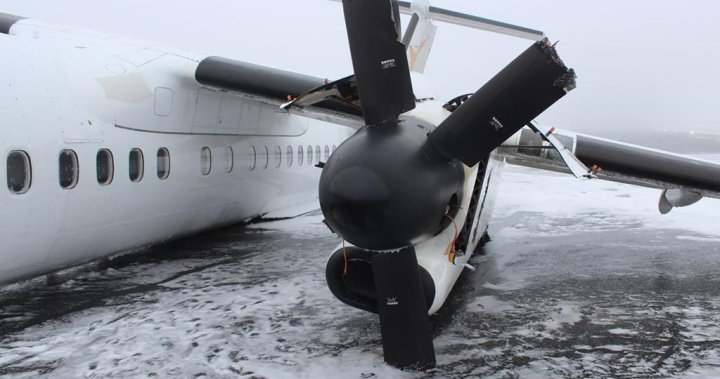On December 28, 2024, an Air Canada Express flight, operated by PAL Airlines, experienced a harrowing landing at Halifax Stanfield International Airport. Carrying 73 passengers and four crew members, the De Havilland Dash 8 turboprop aircraft encountered a series of events originating from a tire blowout during takeoff from St. John’s International Airport in Newfoundland. While the crew remained unaware of the initial incident, the damaged tire set in motion a chain of events that culminated in a dramatic scene upon landing in Halifax. Fortunately, despite the intensity of the situation, no injuries were reported.
The Transportation Safety Board (TSB), an independent investigative body, launched a thorough investigation into the incident. Their findings, released on January 16, 2025, confirmed the sequence of events that led to the emergency landing. The investigation began with the discovery of tire fragments on the runway at St. John’s International Airport, pointing to a tire failure during the initial takeoff. This seemingly minor incident, unnoticed by the crew, would have significant repercussions later in the flight.
As the aircraft touched down in Halifax, the compromised tire triggered a cascade of failures. The initial impact caused a severe vibration that destabilized the landing gear, specifically by unlocking a crucial brace designed to maintain its structural integrity during landing. With the brace disengaged, the left landing gear buckled under the weight of the aircraft, causing the left propeller to strike the runway. The impact ignited a fire in the left engine, adding another layer of complexity to the already precarious situation.
Faced with a rapidly escalating emergency, the flight crew reacted swiftly and decisively. They immediately activated the engine’s fire suppression system, effectively extinguishing the flames and preventing further damage. Following established emergency protocols, the crew then initiated a safe and orderly evacuation of all passengers and crew members. The successful evacuation, under such stressful circumstances, is a testament to the crew’s training and professionalism.
The TSB investigation highlights a critical series of interconnected events. The initial tire blowout in St. John’s, while seemingly inconsequential at the time, set the stage for the subsequent landing gear collapse and engine fire in Halifax. The fact that the crew remained unaware of the blown tire underscores the challenges of identifying and addressing potential issues mid-flight, especially when there are no immediate, noticeable changes in aircraft performance. This incident emphasizes the importance of robust aircraft maintenance and inspection procedures to detect and rectify potential problems before they escalate into emergencies.
This incident also serves as a reminder of the critical role played by well-trained flight crews in managing unexpected emergencies. The crew’s quick thinking and decisive actions in activating the fire suppression system and executing a safe evacuation undoubtedly prevented a potentially more disastrous outcome. The successful outcome, despite the challenging circumstances, demonstrates the effectiveness of safety protocols and the importance of ongoing training for flight crews in handling emergency situations. The investigation continues, and further analysis will likely provide valuable insights into preventing similar incidents in the future.

